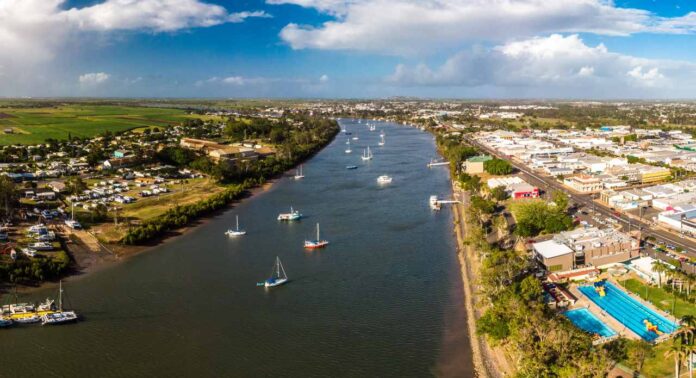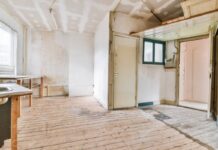Bundaberg Property Market – Here’s What You Need to Know
If you’re considering whether the property market in Bundaberg might be right for you, it’s important to weigh up the pros and cons. As rising property prices make buying in metro areas less and less accessible for both first-home buyers and investors, the relative affordability of Bundy has seen a surge in this regional market. But there’s more
to Bundaberg than just cheaper property. Bundaberg thrives on industry and has a cultural heart to explore as well.
The Bundaberg Property Market
The Bundaberg Region covers 6,451 km sq, with 90% of the area being rural landscape and most of the residential population situated in the city of Bundaberg. While the region has a lot going on, the majority of the action takes place in the Bundaberg CBD.
Bundaberg City is segmented into five areas (north, south, east, west, and central), so we’ll highlight the property market of each individually to give you the full picture for both buying and renting.
House prices in Bundaberg North have increased more than 20% in the last year, now a median price of $475,550 and a rental yield of 6.2%. Units have grown by 10%, with a median price of $300,000 and a rental yield of 5.8%.
In the rental market, there’s been steady growth. The median house rental is $500 per week, an increase of 11.1%. The median unit rental is $355pw, up 10.9%.
With a whopping 25% growth over the last year, the median house price in Bundaberg South has climbed to $437,750 and a rental yield of 6.4%. Units have already had a whopping increase (21.7%), with a median price of $350,000 and a rental yield of 6.2%.
In the rental market, there is growth, though not quite as dramatic as purchase prices. Median house prices are set at $480 per week, a rise of 7.3%, while unit prices are $360pw, an increase of 2.9%.
Bundaberg East is on a serious high, with median house prices ($490,000) up by more than 30% in the last 12 months and a rental yield of 6.2%.
Unit rental prices are down by 1.3% ($370pw), and there aren’t many units in the area, which means when they do hit the market, they’re snapped up in less than
two weeks. On the other side, house rentals are on a 16.1% increase ($522pw), spending just 21 days on the market.
Bundaberg West has seen median house prices up by 28.8% ($515,000) and a rental yield of 5.7%. Units are on an even bigger high, with the median price ($369,000) up 36.7% over the last 12 months, and a rental yield of 6%.
Houses and units for rent spend little more than two weeks on the market before being snapped up, with the median house rental costing $482 per week (+11.6%) and median unit rentals costing $360 per week (+4.3%). · Bundaberg Central
While many buyers would like to purchase a property in Bundaberg Central, it’s a difficult spot simply because there is so little housing to be had. Typically, only a handful of properties sell here each year.
Why Buyers are Attracted to Bundaberg
While the area is on an upswing now, it has had lacklustre growth in the past. Despite that lull, the area has always shown signs of positivity, and that’s why it’s such a popular choice for investors. With so many people looking for a sea or tree change, it’s become a haven for people looking to leave the city behind to make a quieter life closer to the water. It’s a popular tourist destination, too.
There’s a lot to love about this region, especially if you appreciate the natural world. Bundaberg is home to Deepwater Natural Park, the Botanic Gardens, and the Mon Repos Conservation Park, to name a few.
The property market is thriving, and that’s down to a commerce-driven economy, with huge retail centres servicing satellite towns and big industry players. The area is also home to the sugar industry, project engineering management, forestry, livestock and agriculture, fishing and marine pursuits, small crop growth, plastics, metal casting, food and beverage, construction, hospitality, and light aircraft manufacturing. Combined with a booming tourism industry, access to the Great Barrier Reef, and the iconic rum distillery, it’s easy to see why so many people are interested in moving to Bundaberg.
There’s plenty of employment to be had, which means people need places to live, making it a thriving rental hub. Of course, the property prices being half that of a capital city also makes it a popular choice. You can enjoy a high standard of living along with coastal views and a relaxed life by the seaside.
Bundaberg’s Residents and Areas for Growth
The main industries that residents work in include healthcare, education, and retail. However, the main occupations run the gamut from trades and labourers to administrative workers. There are plenty of employment opportunities in Bundaberg and the wider area. Bundaberg is one of the most populous regions in Queensland, with a population of 98,000 (and expected to exceed 100,000 by the end of 2024). There’s a healthy mix of older residents and young families, with excellent schools in the area if you want to lay down roots and start building something special. It’s also an attractive prospect for property investors who want to purchase a house or unit to rent out to the growing population.
All in all, it’s a great time to be a Bundaberg resident, and if you are thinking about investing, it’s well worth exploring the area.





